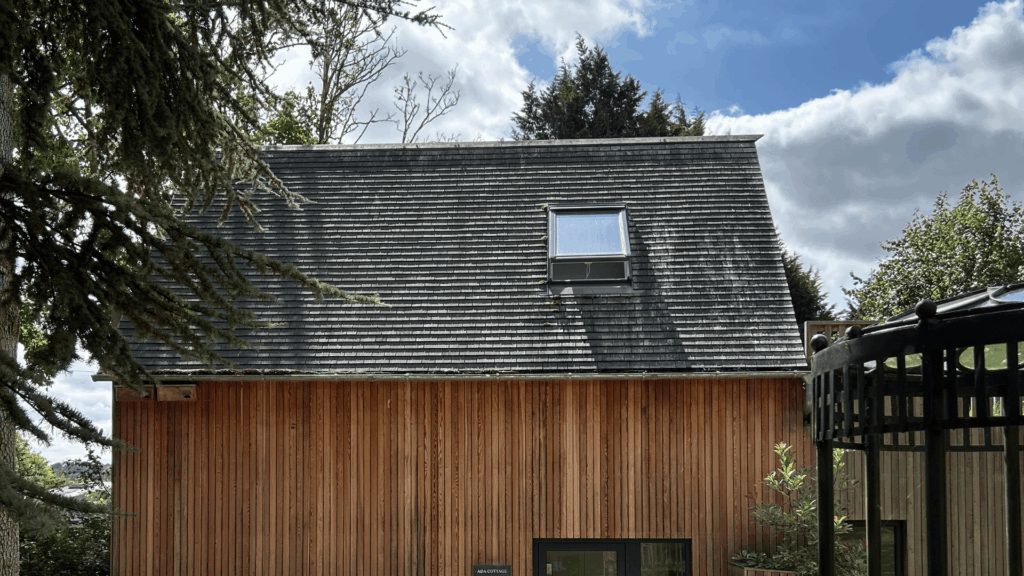
An eco-homes project in eynsham, oxfordshire
The national housing shortage is a hot topic at the moment, as are the carbon emissions associated with new developments (such as Salt Cross in West Oxfordshire). I recently visited a unique eco-homes project in Eynsham to find out more about how communal living can set a positive precedent.
When entering the site of Mike Nightingale’s development at the edge of Eynsham village in West Oxfordshire, it’s hard not to be struck by the modern, larch-clad eco-homes. I sat down with Mike and his wife Margherita over a cup of tea, and quickly realise that this isn’t just a ‘Grand Designs’ project, but rather a shining example of how inter-generational living can bring about a plethora of benefits.
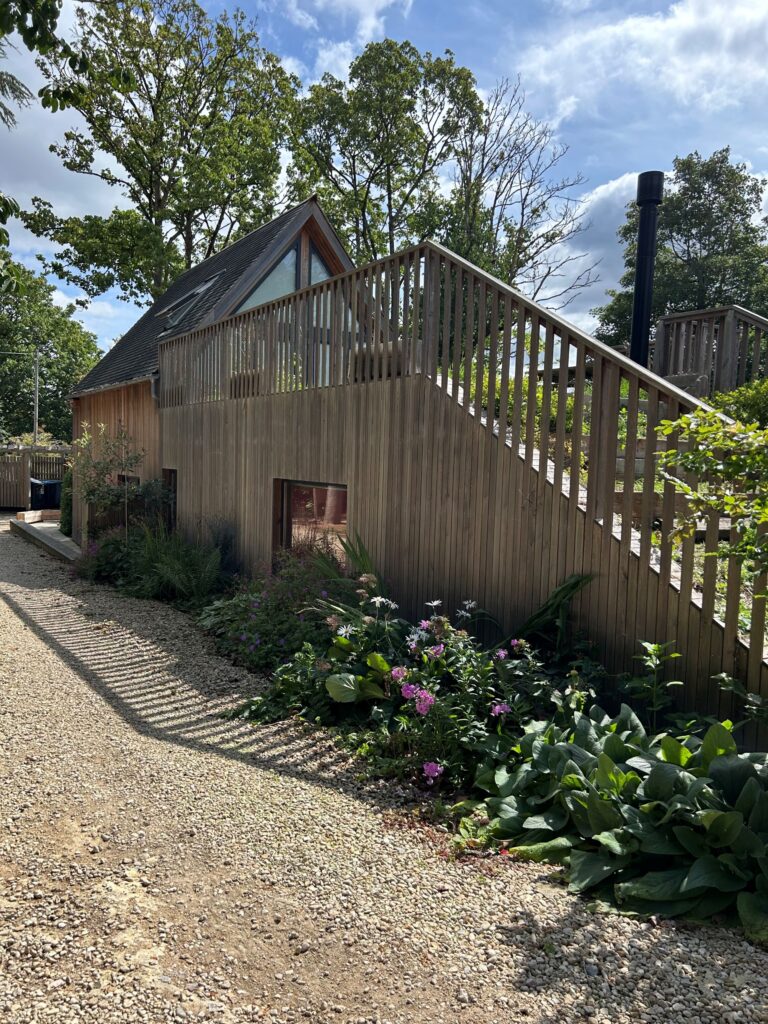
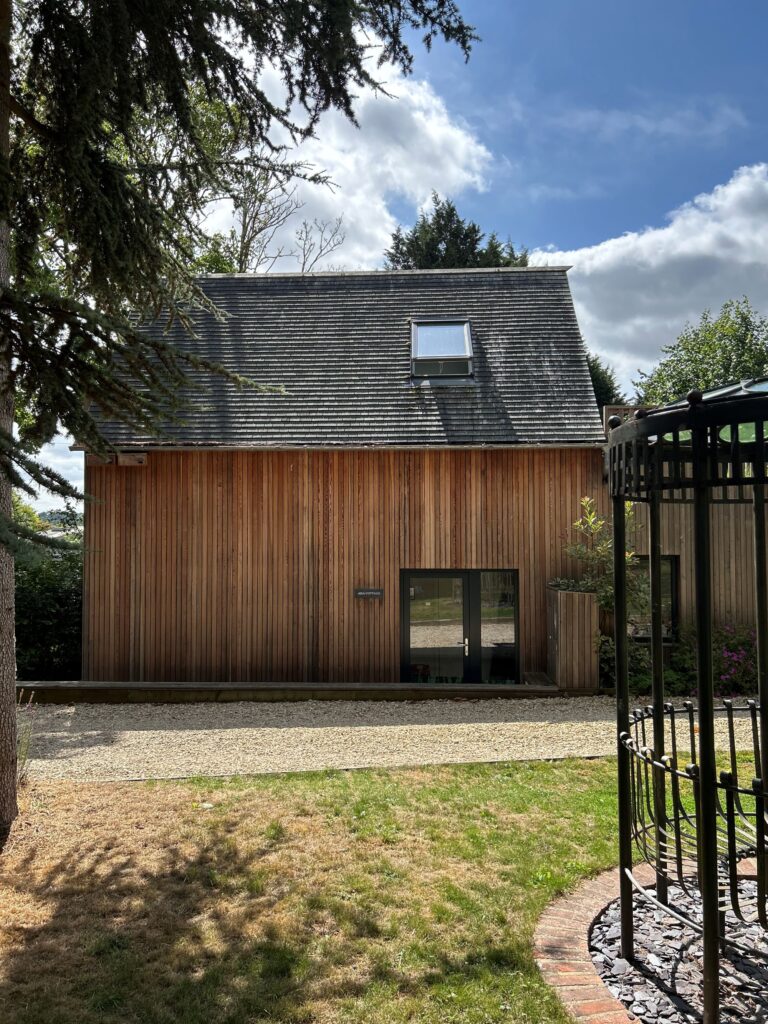
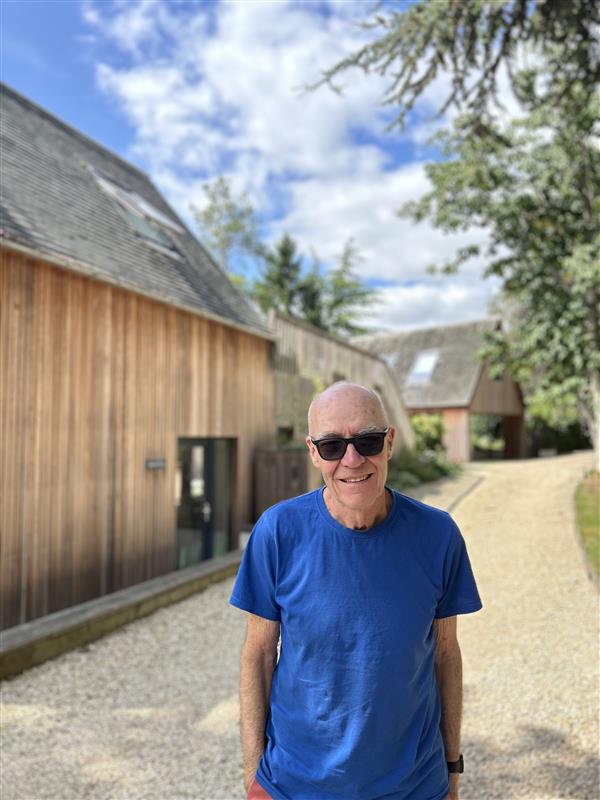
As we head out to the back garden of the original home, Mike, a retired architect, settles in to chat about how the project started. He tells me that he’s ‘a bit of an eco-warrior’, and that was really what inspired his big ideas.
There was always a vision to make the most of the site for the benefit of the family. But also to be part of the fabric of the Eynsham community. I’ve been here for 35 years. And I just love the community spirit here.
As an architect you’re always trying to make the most of what you’ve got in terms of land and I wanted to develop the site as much as possible for the benefit of the family and the community. We wanted to have materials that were recyclable. After a lot of struggle we got the planning which took us 2 1/2 years I think to get. We had to make compromises.
Mike points out the solar panels and battery storage that he has installed on the main house, where he still lives. It’s a fantastic sunny day, and he says that even on an old home, he is managing to save a considerable amount of money thanks to the PV panels. I ask Mike about the reaction to the project in the community.
It’s been amazing. We were slightly worried about doing it, but I think that the lesson is to have a plan that fits in with your family needs, but also your local community’s. It’s amazing the positivity about what we’ve done with the village. There are so many of these big houses with additional land that should be housing a large number of younger people. It’s a symbiotic improvement because you look after each other as a small community.
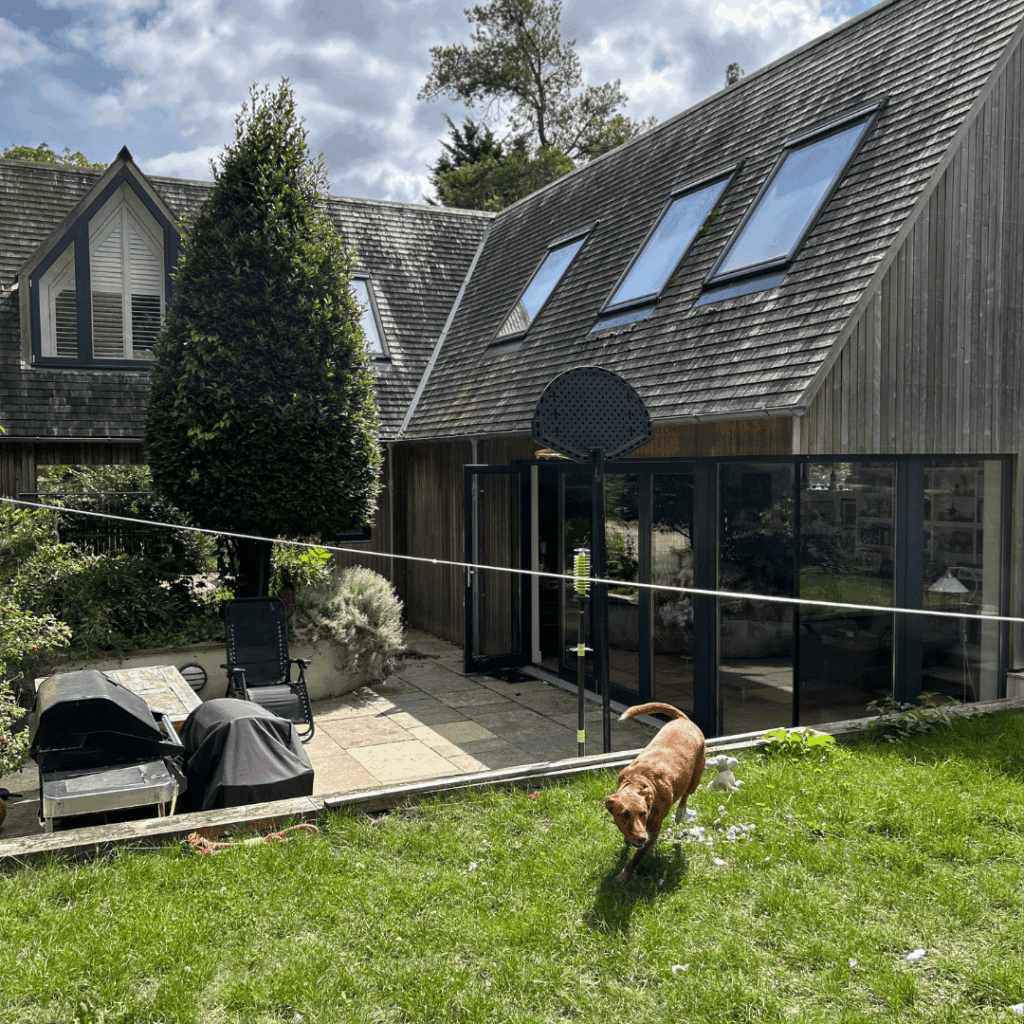
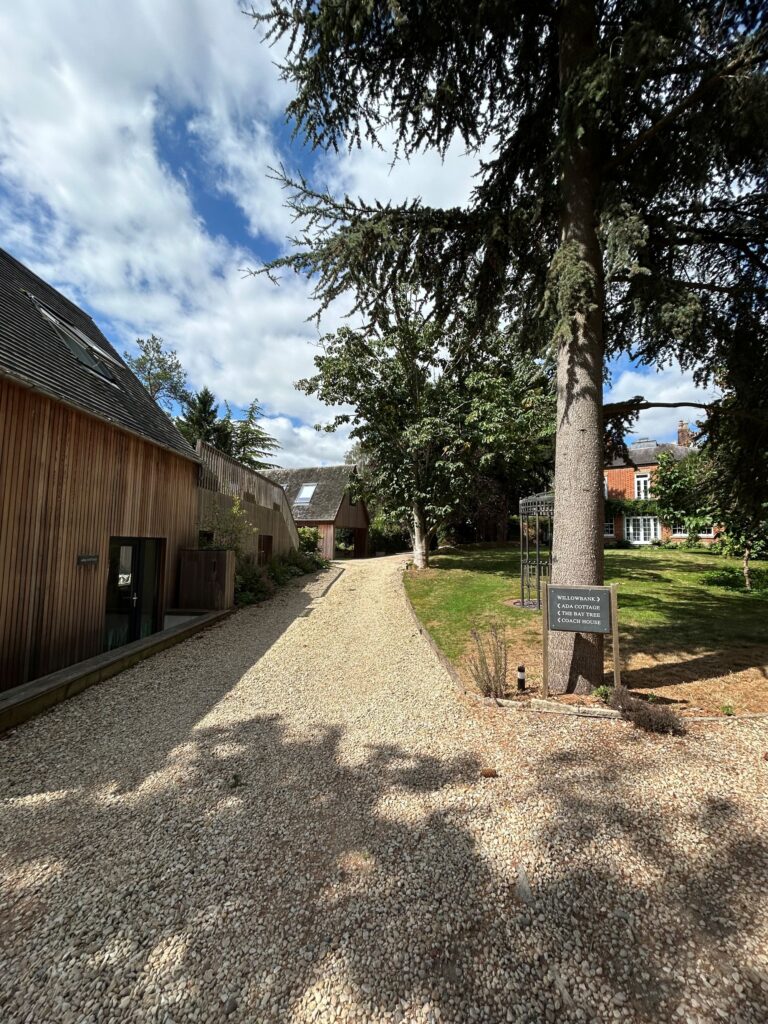
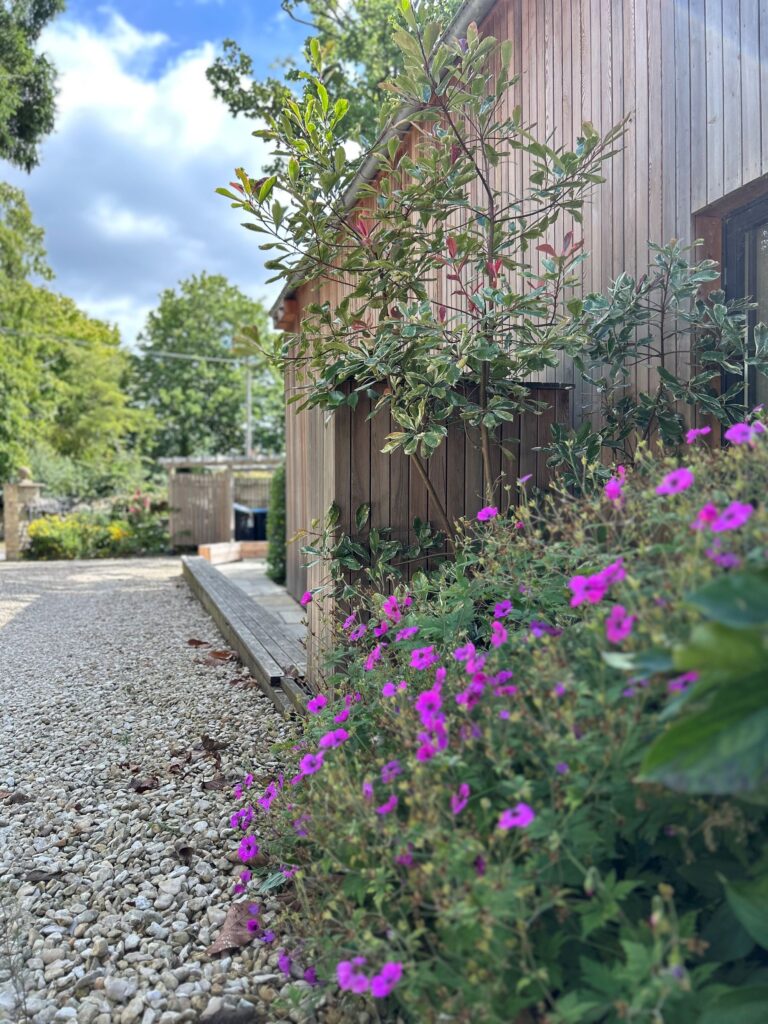
As we continue our conversation, Mike gets a call from his son-in-law, who lives in one of the two new eco-homes, reminding him to take their dog out for a walk whilst they’re at work. I ask him if it’s tricky living on the same plot of land with other people, including family members, and his answer surprises me – “it works for everyone!”. Mike and Margherita both tell me that they spend more quality time with their children and grandchildren than when they lived apart, but that it doesn’t feel forced or unnatural, and that there’s still enough privacy.
Having been prompted to say hello to the energetic dog (a rescue Podenco from Spain) in the garden of one of the eco-homes, Mike takes me on a short tour around the community. The timber homes with green roofs blend incredibly well into the old trees and pastoral countryside, with an artistic twist that Mike says is much needed in Oxfordshire villages.
I ask him what feedback he has had from people living in the eco-homes.
They love it. There’s no disadvantages and you’re only paying one bill – the electricity bill. You’re not having to do the gas and and all the rest of it. Because we’ve got the green roof over 50% of it, there’s very little difference from before and after in terms of the usage of the land. It’s all green and sort of wild.
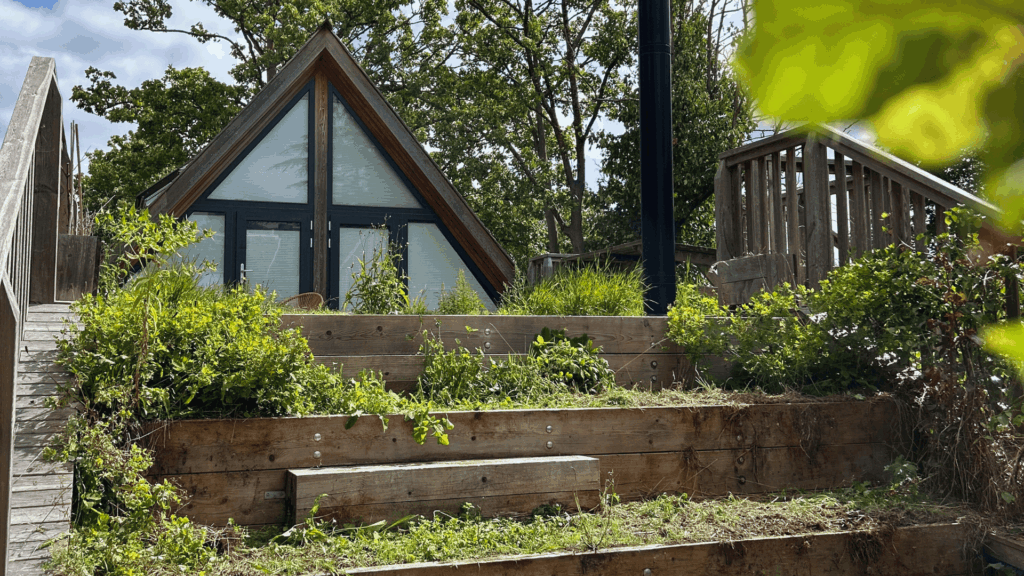
Mike tells me that this is a project that could be replicated elsewhere, especially where older couples are living in buildings with large plots of land. As I’m taking pictures of the homes and Mike is getting ready to head off with the dog, I ask him if he would have any advice for people taking on a similar project. He leaves me with one last thought;
Don’t compromise on the green side of it. You have to take a long term vision and don’t compromise, because in the end you’ll find a way around it. It works brilliantly. You just feel that the land is being used properly.
Rural West Oxfordshire is one of the UK’s most difficult places for young people to afford housing, and it strikes me that for the right people, Mike and Margherita’s project in Eynsham could be a fantastic solution. With more affordable houses like the eco-homes on their land, the community profits from younger people being attracted to the area, bringing economic benefits, and from more sustainable housing. Meanwhile, the plot owners benefit from having a tightly-knit community and a support network that would otherwise be stretched geographically. What’s not to like?
Mike Nightingale’s eco-homes are based withing the CAPZero area, where we’re modelling how a cluster of communities can create a zero-carbon energy system. Find out more below.
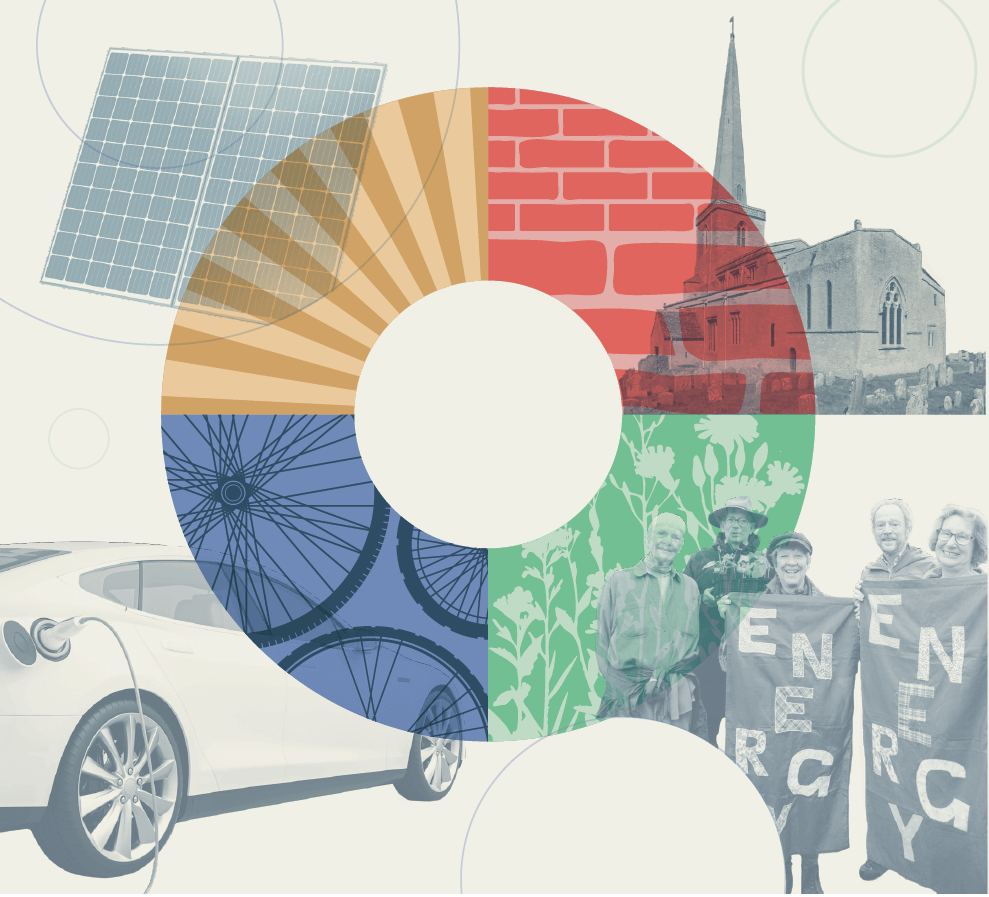 Programme
ProgrammeCommunity Action Plan for Zero-Carbon Energy (CAPZero)
Our Community Action Plan for Zero-Carbon Energy is the first of its kind in the UK. It models how a cluster of communities in West Oxfordshire can create a zero-carbon energy system in their local area, in a way that works for them. It is a plan developed by community representatives together with experts, and…
